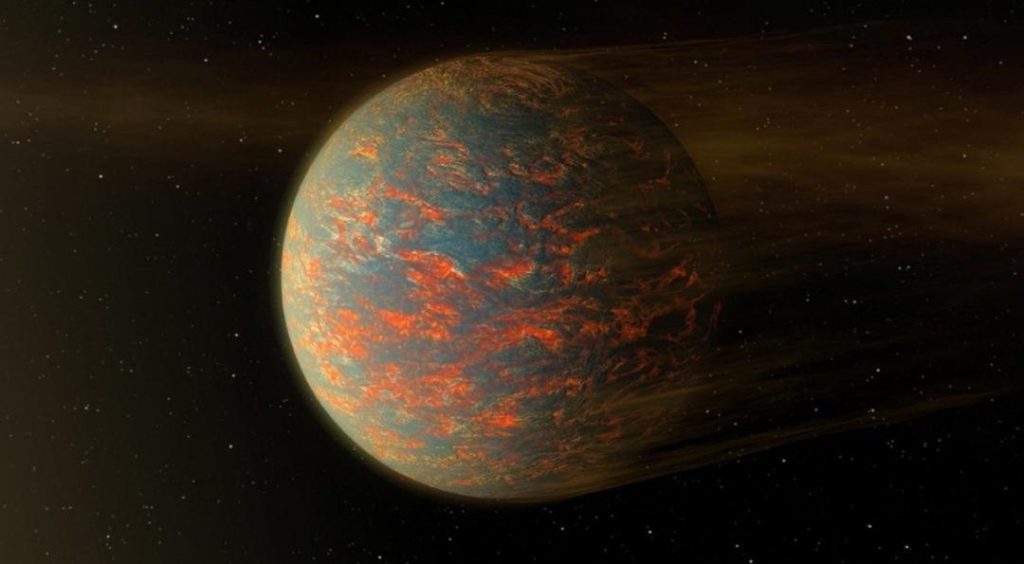
Newly-Discovered Super-Earth Heats Up & Freezes Every 300 Days
In a groundbreaking discovery, astronomers have found a new exoplanet that defies the conventional norms of planetary orbiting patterns. This newly-discovered “super-Earth” is orbiting a Sun-like star 20 light-years from Earth, and its unique orbit takes it on a wild ride of extreme temperatures, swinging between scorching heat and freezing cold every 300 days. In this blog post, we’ll delve into the details of this fascinating discovery and explore what makes this super-Earth so extraordinary.
The exoplanet, classified as a “super-Earth,” is defined as a planet that is bigger than Earth but lighter than Neptune and Uranus. This newly-discovered super-Earth, designated as K2-141b, is a significant find in the field of exoplanetary research. Its unique orbit is an oval shape, which is quite different from the circular orbits of most planets in our solar system.
The Extreme Climate Cycle of K2-141b
K2-141b’s orbit takes it extremely close to its star for about 150 days, causing the planet to heat up to scorching temperatures. This intense heat is due to the star’s intense radiation and the planet’s close proximity to it. The surface temperature of K2-141b during this period is estimated to be around 2,000°F (1,093°C), making it hotter than the surface of Mercury, which is the closest planet to the Sun in our solar system.
After its 150-day stint in the scorching heat, K2-141b begins to move away from its star, and the planet starts to cool down. As it moves further away, the temperature drops dramatically, causing the planet to freeze over. This period of extreme cold lasts for around 150 days, with surface temperatures plummeting to around -200°F (-129°C).
This extreme climate cycle, which repeats every 300 days, is a result of K2-141b’s unique elliptical orbit. The planet’s close proximity to its star during part of its orbit causes it to heat up, while its distance from the star during the other part of its orbit leads to freezing temperatures.
Implications for Life on K2-141b
The discovery of K2-141b raises intriguing questions about the possibility of life on this super-Earth. The extreme climate cycle would make it challenging for life to thrive on the planet’s surface. Any potential life forms would need to be extremely resilient and adapted to survive in temperatures that can range from scorching hot to freezing cold.
However, it’s not impossible to imagine life existing on K2-141b. For example, microorganisms could thrive in the subsurface or beneath the surface of the planet, where conditions might be more stable. Alternatively, life could exist in the atmosphere, where gases and chemicals could react to produce energy.
The Search for More Super-Earths
The discovery of K2-141b highlights the importance of continued exoplanetary research. Astronomers are working tirelessly to discover more exoplanets, and the search for super-Earths is an area of significant interest. By studying these planets, scientists can gain valuable insights into the formation and evolution of planetary systems, as well as the potential for life beyond Earth.
The discovery of K2-141b also underscores the significance of the NASA Transiting Exoplanet Survey Satellite (TESS) and the European Space Agency’s (ESA) PLATO mission. These missions are designed to detect exoplanets and study their properties, providing valuable data for scientists to analyze and interpret.
Conclusion
The discovery of K2-141b, a newly-discovered super-Earth that heats up and freezes every 300 days, is a significant find in the field of exoplanetary research. This unique planet’s extreme climate cycle offers a fascinating opportunity for scientists to study the properties of exoplanets and the potential for life beyond Earth.
As we continue to explore the universe and discover new exoplanets, we may uncover more unusual and extreme cases like K2-141b. The search for life beyond Earth is an ongoing effort, and discoveries like this one will play a crucial role in advancing our understanding of the universe and our place within it.
Source:






